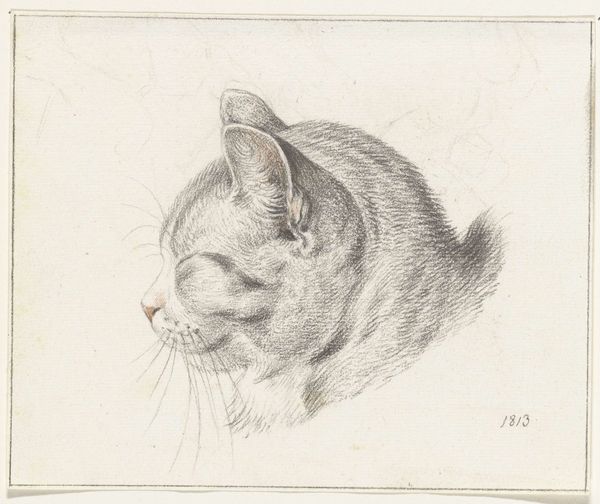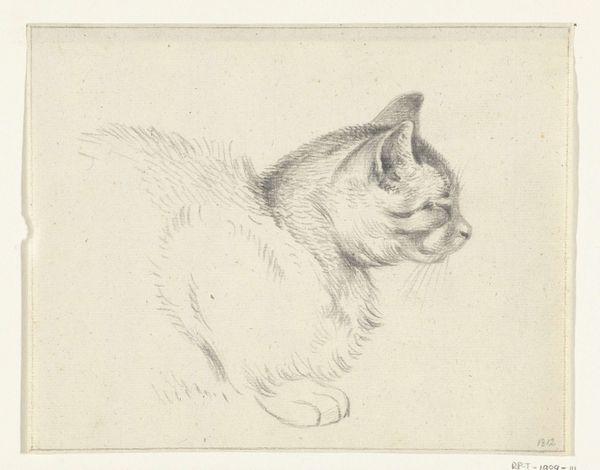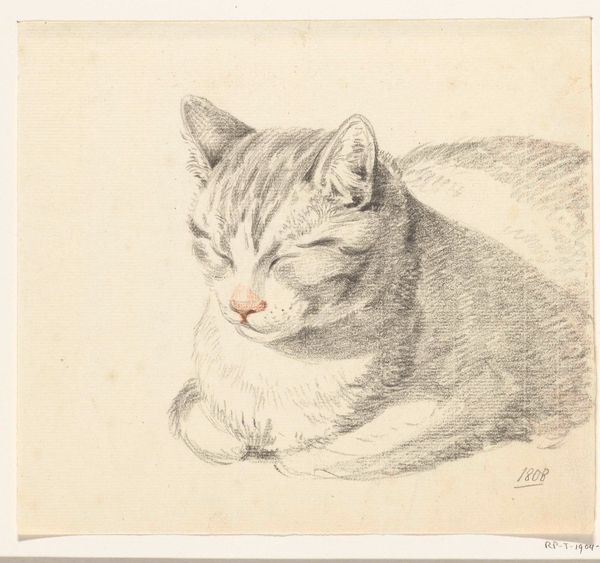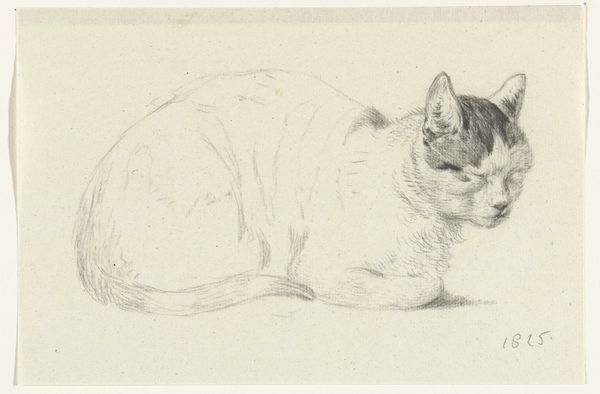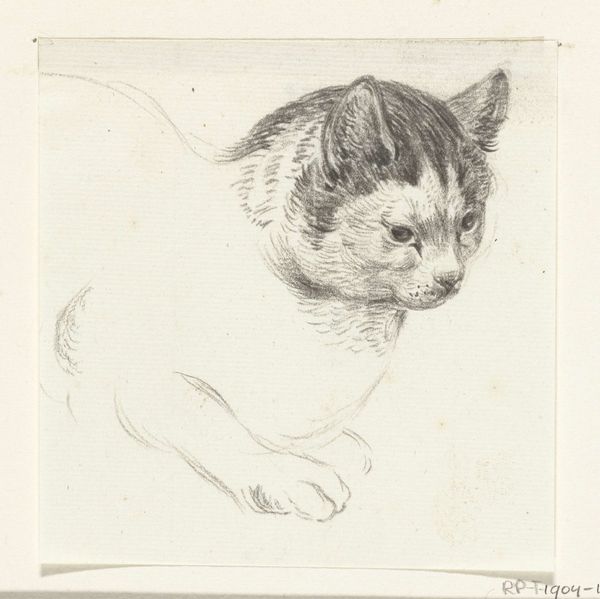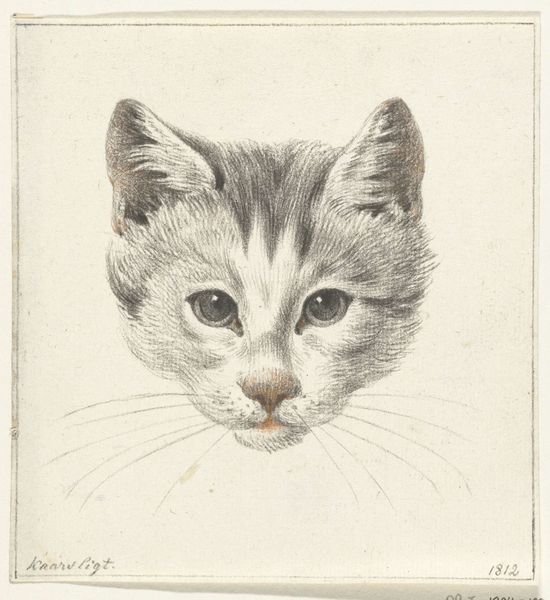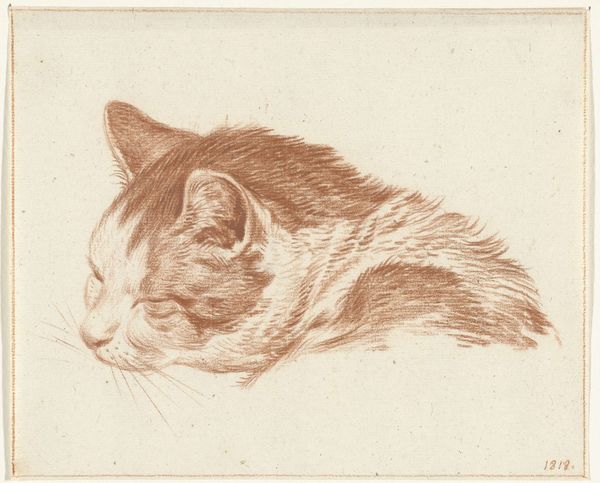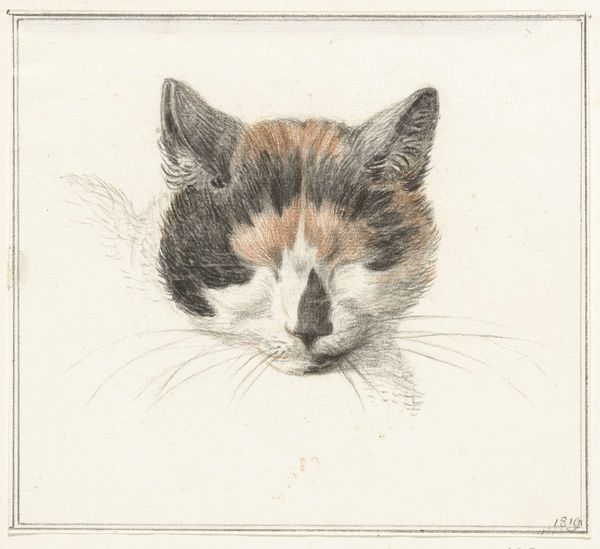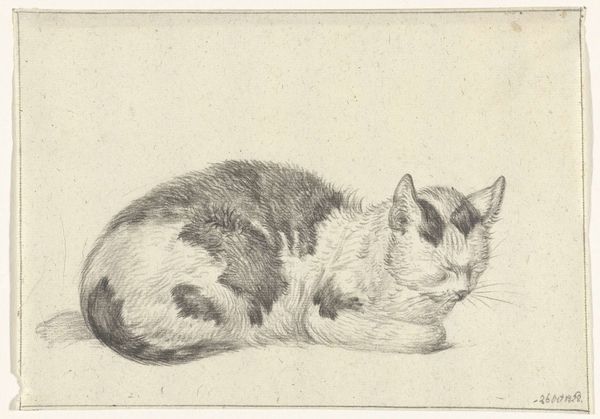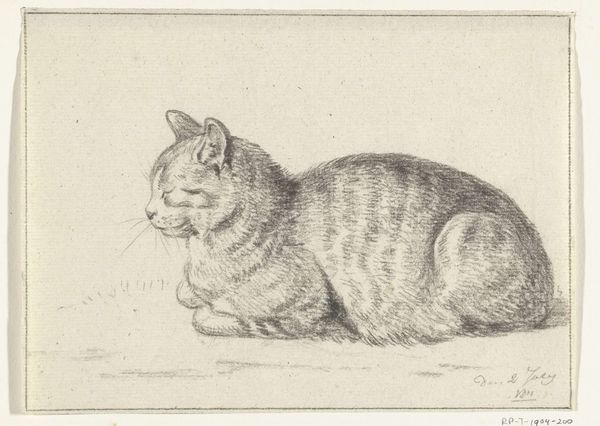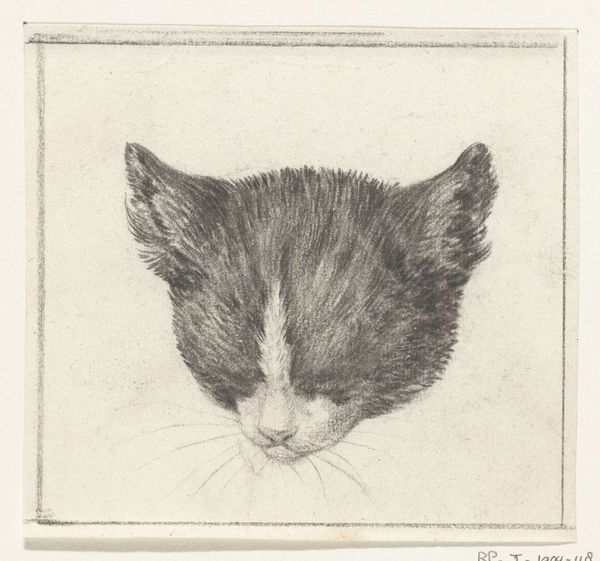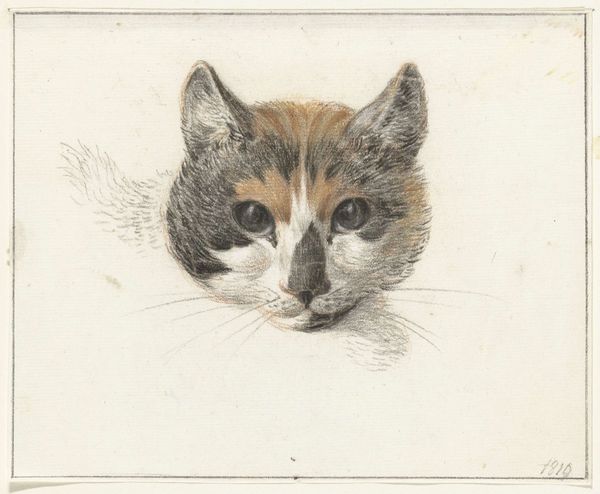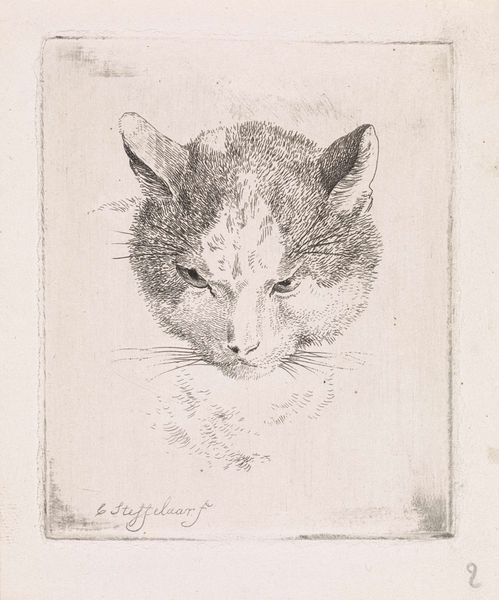
drawing, pencil
#
portrait
#
pencil drawn
#
drawing
#
amateur sketch
#
toned paper
#
light pencil work
#
pencil sketch
#
personal sketchbook
#
pencil drawing
#
pencil
#
sketchbook drawing
#
pencil work
#
pencil art
#
realism
Dimensions: height 161 mm, width 178 mm
Copyright: Rijks Museum: Open Domain
Editor: This is "Head of a Cat, facing left," a pencil drawing from 1819 by Jean Bernard. There's a remarkable gentleness in this work; it feels like an intimate portrayal. What stands out to you? Curator: I'm immediately drawn to the domesticity, and I wonder, in what ways could we interpret this work beyond a simple animal study? Think about 19th-century social structures and the emerging role of pets in bourgeois life. Did owning and depicting animals signify a particular status, perhaps mirroring a broader power dynamic in society? Editor: So, it's not just a cat, but a reflection of societal values? The way the artist focuses on detail implies affection, right? Curator: Precisely. The level of detail certainly speaks to a relationship. But let’s consider class. Was owning pets, and the leisure to sketch them, a privilege? How might the representation of domestic animals contrast with the lives of working-class individuals or marginalized communities, whose interactions with animals were more utilitarian? Does this contrast show a form of exclusion, too? Editor: I see, framing it within class dynamics complicates it, and moves beyond cuteness. The sketch is intimate but perhaps excluding too. Curator: Exactly. We can explore how visual representations like this play a part in creating social categories. And furthermore, do those lines exist even now? Editor: It makes me consider what we choose to depict and why; how those choices always carry a particular meaning within specific contexts. Curator: And that's precisely the conversation art should spark, I feel. Editor: It makes you question your first reaction to something, such as an innocent cat drawing!
Comments
No comments
Be the first to comment and join the conversation on the ultimate creative platform.
